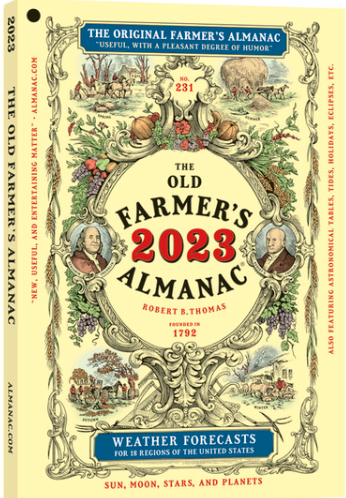Under the guiding hand of its first editor, Robert B. Thomas, the premiere issue of The Old Farmer’s Almanac was published in 1792 during George Washington’s first term as president. Although many other almanacs were being published at that time, Thomas’s upstart almanac became an immediate success. In fact, by the second year, circulation had tripled from 3,000 to 9,000. Back then, the Almanac cost only six pence (about nine cents).

An almanac, by definition, records and predicts astronomical events (the rising and setting of the Sun, for instance), tides, weather, and other phenomena with respect to time. So what made The Old Farmer’s Almanac different from the others? Since his format wasn’t novel, we can only surmise that Thomas’s astronomical and weather predictions were more accurate, the advice more useful, and the features more entertaining.
In 1861, Charles L. Flint became editor and provided his readers with a heavy emphasis on farming. The next two editors, John Boies Tileston and Loomis Joseph Campbell, served short terms and did little more than keep the Almanac going in the traditional format.
Robert Ware took over as sixth editor in 1877, but his main interest was the publishing business, and he probably delegated many of the editorial tasks. Ware’s brother, Horace, took the reins in 1900. During his 19 years as editor, he began to orient the book toward a more general audience by replacing the scientific agriculture articles with general features on nature and modern life.
The Almanac passed the four million circulation mark in the early 1990s. In 2000, Janice Stillman became the 13th (and first female) editor of The Old Farmer’s Almanac. She maintains the style established by her predecessors, the editorial direction taken by Hale, and a true dedication to hundreds of years of tradition while striving always to appear brand-spanking-new.
According to almanac.com. en.wikipedia.org. Source of photos: internet




![[HONORARY PROFESSOR OF RECORD FOR PRACTICE AND EMPIRICAL RESULTS – 2024] RECORD HOLDER CHU BAO QUE (BAC GIANG PROVINCE, VIETNAM)](https://uskings.us/wp-content/uploads/2024/05/IMG_0386-218x150.jpg)



